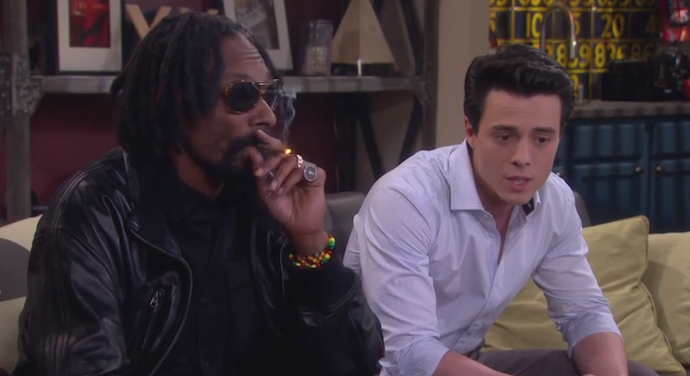Marijuana Product Placement On The Rise


Two weeks ago, the “One Life to Live” relaunch on Hulu featured Snoop (Dogg) Lion smoking what appeared to be a blunt in a main character’s apartment. I thought it was hilarious and posted as such on Facebook. But I soon found out the many old-timers and Bible thumpers also watching the revival of their “stories” found no humor in the portrayal. In fact, they were outraged. What they didn’t realize is that marijuana is in the midst of a public-image makeover, and its placement on TV and the big screen is transforming from inside joke to big business. Of course, its placement on “One Life” was probably just Snoop being Snoop… but I digress.
Take Cheech Marin. The actor built his career on top of his portrayal of half a pair of hippy stoners in the classic “Cheech and Chong” films, But in a recent Huffington Post piece written by Eleazar Melendez, Marin said his endorsement deals have shot up since Colorado and Washington legalized pot for recreational use last year. Large companies are more willing to link marijuana to their brands, and the image of marijuana smokers is changing. No longer are they solely associated with “Cheech and Chong”-inspired dirty stoner hippies, but businessmen taking a toke and soccer moms relaxing with a pipe after stressful days.
“We’ve always maintained throughout our career that we are middle-of-the-road dopers, and that’s the green standard,” Marin told Melendez. “The mother wearing pearls and smoking — that is the new norm. I see it all the time, after they drop the kids off at school.”
LA marketing consultant Cheryl Shuman would agree. Shuman crusades to change America’ vision of a slacker dope smoker with images of middle-class adults chilling with some weed after a long day.
“The High Times generation that came with all their pot leafs and all that, they’re there, but the new weed consumer is a successful, professional and most likely female client,” Shuman, who represents several companies that manufacture smoking gadgets and consults with television and film studios contemplating how to depict marijuana smokers, told Melendez. “The thought of being associated with the whole druggie loser scene is not appealing to them, which is why the branding is changing.”
Shuman is among a number of marketing specialists in the United States who are trying to make marijuana more socially acceptable. For her part, she helps television and film producers ensure on-screen marijuana use is shown in a positive light.
“The most important thing is to get the subject placed in a positive light,” Shuman told Melendez. “Detail is important too. When you’re rolling joints and stuff, you need to have proper prop joints.”
And Shuman would know: she started smoking pot for medical reasons in the mid-1990s. After discovering others in Hollywood smoked their weed incognito, ashamed of their connections to California’s marijuana-dispensary culture, Shuman decided to sway pot’s image. She founded the Beverly Hills Cannabis Club, which has hosted high-class medical marijuana tastings for its members.
And Shuman certainly has the chops to promote a product. After she picked Tom Cruise’s Ray Ban Wayfarers in 1983’s “Risky Business,” the public bought 360,000 in the few following months. Shalso chose Arnold Schwarzenegger’s oversized Gargoyles ANSI sunglasses in 1984’ “Terminator.” In recent year, however, she has collaborated with producers of NBC’s “Parenthood” and “Law and Order,” as well as the films “Ted” and “The Happy Tree.” While working with the producers of the cable program, “Wilfred,” she encouraged them to have the pot-smoking dog use a vaporizer rather than a roughly-constructed bong, and the change was well-received. Shuman firmly believes her work is changing America’s attitudes toward pot smokers. And Marin agrees
“From Cheech and Chong, you’re getting a comedic edge,” Marin told Melendez, “In the future, people will not believe that we ever existed, that there really was a Cheech and Chong. We’re hoping in 100 years the name will still be around, but people will be like, ‘What, Cheech and Chong were real? It’s not just a cartoon?’ That is a goal.”









































